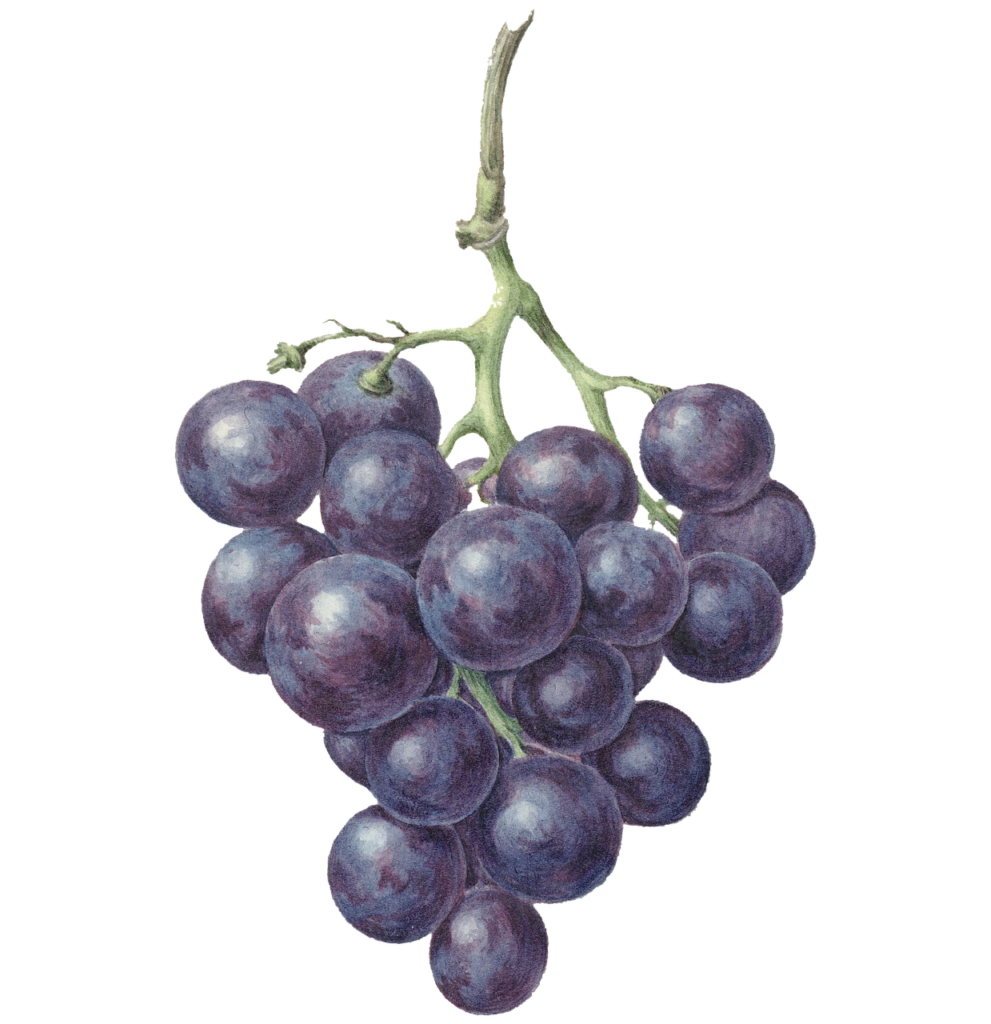A Journey from Ancient Vineyards to Modern Tables
Grapes are one of the world’s most cherished fruits, weaving their way into ancient myths, modern meals, and iconic wines. With a rich history, diverse varieties, and remarkable nutritional benefits, grapes have transcended cultures and cuisines for millennia. This article explores everything you need to know about grapes—from their history and cultivation to their nutritional power and culinary versatility.
Table of Contents
A Brief History of Grapes
Grapes have been cultivated for over 8,000 years, with origins traced back to the ancient regions of the Near East, particularly modern-day Turkey, Georgia, and Iran. Grapevines thrived along river valleys and fertile plains, where early civilizations such as the Mesopotamians and Egyptians first realized their potential for wine production.
As human civilization spread, so did the cultivation of grapes. The Phoenicians, masters of trade and navigation, transported grapevines across the Mediterranean. Grapes became a staple in Ancient Greek and Roman cultures, symbolizing abundance and festivity. Roman vineyards paved the way for modern viticulture, introducing techniques for pruning and selecting superior grape varieties.
“Grapes have been cultivated for thousands of years, and their importance in human civilization cannot be overstated.” – Luca Rossi, Italian winemaker.
Today, grapes are grown on every continent except Antarctica, with vineyards dotting landscapes from Europe’s rolling hills to California’s sun-drenched valleys. As one of the most widely grown fruit crops, the global grape industry produces over 75 million tons annually, with wine being the dominant use.

Types of Grapes: Table, Wine, and Raisins
The diversity of grapes is astonishing, with over 8,000 varieties in existence. These varieties fall into three main categories: table grapes, wine grapes, and raisins, each with unique characteristics and culinary uses.
Table Grapes:
- Green/White Grapes (e.g., Thompson Seedless): Crisp, sweet, and juicy, these are ideal for fresh consumption.
- Red Grapes (e.g., Red Globe, Crimson Seedless): Known for their slightly tart flavor and firm texture.
- Black/Purple Grapes (e.g., Concord, Black Corinth): Packed with antioxidants, these varieties are popular in fresh eating and juice production.



Wine Grapes:
- Cabernet Sauvignon: Known for its bold flavors and tannic structure, ideal for red wine.
- Chardonnay: A versatile white grape, producing wines with fruity and buttery notes.
- Pinot Noir: Delicate and aromatic, producing light-bodied wines.
- Syrah/Shiraz: Known for its robust flavor and dark fruit characteristics, it’s a favorite for red wine production.

Raisins:
- Grapes like Thompson Seedless and Sultana are sun-dried or mechanically dehydrated to produce raisins. These dried fruits are rich in fiber and used in both sweet and savory dishes.
Nutritional Benefits of Grapes
Grapes may be small, but they pack a powerful nutritional punch. A rich source of vitamins, minerals, and antioxidants, grapes provide numerous health benefits:
- Antioxidants: Grapes, especially red and black varieties, are loaded with polyphenols like resveratrol, which protect cells from oxidative stress and support heart health.
- Vitamins: They are a good source of vitamins C and K, which are essential for immune health and blood clotting, respectively.
- Minerals: Grapes contain potassium, which helps maintain fluid balance, and copper, which plays a role in energy production.
- Fiber: Their high fiber content promotes healthy digestion and prevents constipation.
- Hydration: Composed of over 80% water, grapes are excellent for hydration.
Consuming grapes regularly may reduce the risk of chronic conditions such as heart disease, cancer, and diabetes.
Nutrition Chart for Grapes (100 grams serving)
| Nutrient | Amount per 100g | % Daily Value (DV) |
|---|---|---|
| Calories | 69 kcal | 3% |
| Water Content | 80.5 g | — |
| Carbohydrates | 18.1 g | 6% |
| Sugars | 15.5 g | — |
| Dietary Fiber | 0.9 g | 4% |
| Protein | 0.7 g | 1% |
| Fat | 0.2 g | 0% |
| Vitamin C | 10.8 mg | 12% |
| Vitamin K | 14.6 mcg | 18% |
| Vitamin B6 | 0.086 mg | 5% |
| Potassium | 191 mg | 5% |
| Copper | 0.127 mg | 14% |
| Manganese | 0.071 mg | 3% |
| Calcium | 10 mg | 1% |
| Iron | 0.36 mg | 2% |
| Magnesium | 7 mg | 2% |
| Phosphorus | 20 mg | 3% |
| Folate | 2 mcg | 1% |
Growing Grapes: A Guide for Home Gardeners and Commercial Growers
Growing grapes can be rewarding for both novice gardeners and commercial farmers. Here’s a step-by-step guide to help you get started.
Planting:
- Climate: Grapes thrive in sunny, temperate climates with long growing seasons.
- Soil: Well-draining, slightly acidic soil is ideal for grapevines.
- Spacing: Plant grapevines 6-8 feet apart to allow room for growth and airflow.
- Support: Install trellises or arbors for the vines to climb, ensuring they have proper support.
Pruning:
- Pruning is essential to encourage healthy growth and fruit production. Prune grapevines annually during the dormant season, removing excess growth and shaping the vines.
Pest Control:
- Grapes are susceptible to pests like aphids, mites, and fungal diseases. Use organic pesticides or introduce beneficial insects to control these problems. Mulching can also help retain soil moisture and prevent weed growth.
Harvesting:
- Grapes are ready to harvest when they reach full color and sweetness. For wine grapes, a refractometer can measure the sugar content to determine the optimal harvest time.
Whether for home gardens or commercial vineyards, careful attention to planting, pruning, and pest control will yield a fruitful harvest.

How to Grow Grapes, Complete Growing Guide
Culinary Applications: Beyond the Grape Bowl
Grapes are incredibly versatile in the kitchen. Here are some of the ways grapes can be used:
- Fresh: Enjoy them as a snack or in fruit salads.
- Jams and Jellies: Grape jams and jellies add sweetness to breakfasts and desserts.
- Wine: Grapes are synonymous with winemaking, with specific varieties creating world-renowned red, white, and sparkling wines.
- Grape Juice: A refreshing and nutritious drink made from freshly pressed grapes.
- Desserts: Grapes are often incorporated into pies, tarts, and sorbets.
- Sauces: Cooked grapes make excellent sauces for meats like chicken or pork.
From fresh to fermented, grapes offer endless culinary possibilities.
Grape-Related Facts and Trivia
- The art of winemaking is called oenology, and winemakers are known as oenologists.
- Concord grapes are native to North America and are used to make the famous Concord grape jelly.
- In Spain, there’s a New Year’s tradition called “Las Doce Uvas”, where people eat 12 grapes at midnight for good luck in the coming year.
- The world’s oldest known winery, dating back to 4100 BC, was discovered in the Areni-1 cave in Armenia.
- A single bottle of wine requires about 600-800 grapes to produce.
Conclusion: Grapes Through Time and Culture
Grapes have shaped human history, from their use in ancient rituals to their place on modern dinner tables. Their remarkable diversity, nutritional benefits, and culinary versatility make them one of nature’s most valuable gifts. Whether you enjoy them fresh, dried, or in a glass of wine, grapes continue to offer something for everyone, enriching our lives one vine at a time.
“Ready to create culinary magic? Start cooking today!” Click Here





